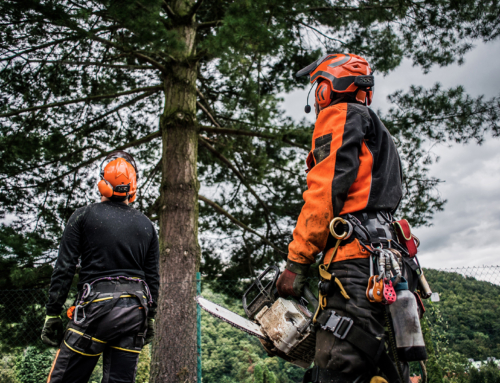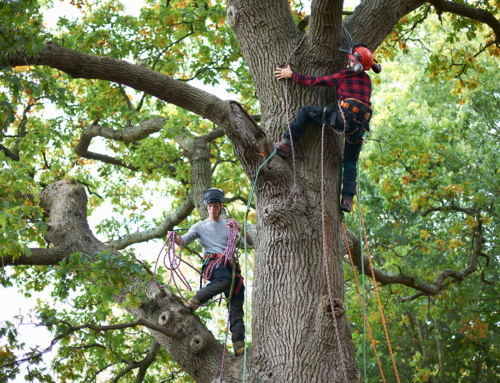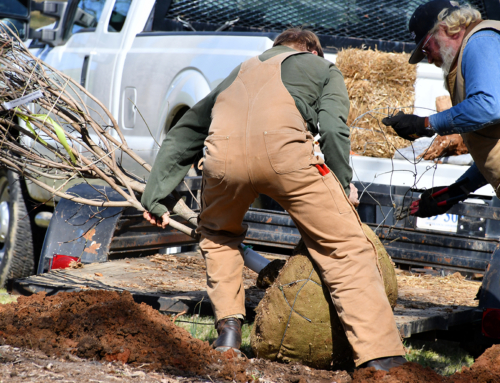Understanding the importance of tree restoration in Mammoth Lakes
Mammoth Lakes, nestled in the heart of the Sierra Nevada Mountains, is a breathtaking destination that captivates visitors from around the world. The towering pines, majestic firs, and vibrant aspens that adorn the landscape are not merely aesthetically pleasing; they play a crucial role in maintaining the delicate ecological balance of the region. These trees serve as the lungs of the forest, filtering the air, regulating the water cycle, and providing vital habitats for a diverse array of wildlife.
However, in recent years, the Mammoth Lakes area has faced a troubling challenge – the steady deterioration of its cherished tree population. Various factors, including drought, disease, and insect infestations, have taken a toll on the health and vitality of these natural wonders. As the damaged trees continue to mar the scenic beauty of the region, the need for a comprehensive restoration effort has become increasingly pressing.
Recognizing the urgency of this situation, local authorities and environmental organizations have joined forces to spearhead the Mammoth Lakes Restoration Initiative. This ambitious project aims to revive the damaged trees and rejuvenate the natural habitat, ensuring that the region’s iconic landscapes remain vibrant and thriving for generations to come. By investing in tree restoration, the community is not only preserving the aesthetic appeal of Mammoth Lakes but also safeguarding the delicate ecosystems that rely on these trees for their survival.
Common tree damage in Mammoth Lakes and its causes
One of the most prevalent issues affecting the trees in Mammoth Lakes is drought-related stress. The prolonged periods of low precipitation, coupled with rising temperatures, have taken a significant toll on the trees’ ability to thrive. As the soil moisture levels decline, the trees struggle to absorb the necessary nutrients and water, leading to a weakened immune system and increased susceptibility to disease and insect infestations.
Another major contributor to tree damage in Mammoth Lakes is the proliferation of insect pests, such as the bark beetle and the mountain pine beetle. These tiny, yet voracious, insects burrow into the trees, disrupting the flow of vital nutrients and ultimately causing the tree’s demise. The warmer climate and drier conditions have created an ideal environment for these pests to thrive, further exacerbating the problem.
Disease outbreaks, such as fungal infections and bacterial blights, have also been a significant concern in Mammoth Lakes. These ailments can weaken the trees, making them more vulnerable to other environmental stressors and, in some cases, leading to their complete destruction. The complex interplay between climate change, pest infestations, and disease has created a perfect storm, threatening the long-term viability of the region’s tree population.
Assessing the extent of tree damage in Mammoth Lakes
To effectively address the tree restoration challenge in Mammoth Lakes, the first crucial step is to conduct a comprehensive assessment of the extent of the damage. This process involves meticulous surveys and inspections conducted by skilled arborists and forest professionals, who meticulously examine each tree to determine its condition and identify the underlying causes of the damage.
Through the use of advanced technologies, such as aerial imagery and ground-based surveys, the assessment team is able to gather detailed data on the affected trees, including their location, species, and the severity of the damage. This information is then compiled into a detailed report, which serves as the foundation for the restoration plan, guiding the selection of the most appropriate interventions and prioritizing the areas in greatest need of attention.
The assessment process also involves close collaboration with local authorities, environmental organizations, and community stakeholders, who provide valuable insights and historical data on the tree population in Mammoth Lakes. By combining scientific expertise with local knowledge, the assessment team is able to gain a deeper understanding of the unique challenges faced by the region, ensuring that the restoration efforts are tailored to the specific needs of the area.
Techniques for restoring damaged trees in Mammoth Lakes
Once the assessment is complete, the Mammoth Lakes Restoration Initiative shifts its focus to the implementation of various techniques and strategies aimed at reviving the damaged trees. One of the primary approaches is the use of targeted pruning and trimming, which involves the careful removal of dead, diseased, or damaged branches and limbs. This not only improves the tree’s overall appearance but also promotes the growth of healthy, new foliage, ultimately enhancing the tree’s resilience and ability to withstand future stressors.
In cases where the tree damage is more severe, the restoration team may employ more advanced techniques, such as soil amendments and root treatments. By improving the soil quality and addressing any underlying issues with the tree’s root system, the team can help the tree regain its vigor and improve its chances of survival. Additionally, the use of specialized fertilizers and biostimulants can provide the necessary nutrients and support the tree’s natural healing processes.
For trees that have been severely compromised by insect infestations or disease, the restoration team may resort to targeted treatments, such as the application of insecticides or fungicides. These targeted interventions are carefully calibrated to address the specific issues affecting the tree, without causing harm to the surrounding environment. In some cases, the team may even opt for the strategic removal of severely damaged trees, ensuring that the remaining healthy trees have the resources they need to thrive.
Best practices for tree restoration in Mammoth Lakes
Effective tree restoration in Mammoth Lakes requires a multi-faceted approach that combines scientific knowledge, sustainable practices, and a deep understanding of the local ecosystem. The Mammoth Lakes Restoration Initiative has adopted a set of best practices that guide its efforts, ensuring that the restoration process is both efficient and environmentally responsible.
One of the key principles underlying the initiative is the emphasis on native and adaptive tree species. By focusing on trees that are well-suited to the local climate and soil conditions, the restoration team can increase the chances of long-term success and minimize the risk of introducing invasive species that could disrupt the delicate balance of the ecosystem.
Additionally, the initiative places a strong emphasis on sustainable and eco-friendly practices, such as the use of organic amendments, the minimization of chemical treatments, and the implementation of water-efficient irrigation systems. By adopting these approaches, the restoration team can not only revive the damaged trees but also contribute to the overall environmental health of the Mammoth Lakes region.
Collaboration and community engagement are also integral components of the Mammoth Lakes Restoration Initiative. The team works closely with local authorities, environmental organizations, and community members to ensure that the restoration efforts align with the needs and priorities of the local population. This collaborative approach fosters a sense of ownership and investment in the project, ultimately leading to a more sustainable and long-lasting impact.
Community involvement in tree restoration efforts in Mammoth Lakes
The Mammoth Lakes Restoration Initiative recognizes that the success of its efforts relies heavily on the active participation and support of the local community. To this end, the team has implemented a comprehensive outreach and engagement strategy, aimed at educating residents and visitors alike about the importance of tree restoration and the various ways in which they can contribute to the cause.
One of the key initiatives spearheaded by the restoration team is the “Adopt-a-Tree” program, which allows community members to take an active role in the rejuvenation of a specific tree. Through this program, individuals can sponsor the care and maintenance of a tree, ensuring that it receives the necessary attention and resources to thrive. This not only fosters a sense of ownership and investment in the restoration process but also helps to build a stronger connection between the community and the natural environment.
Additionally, the Mammoth Lakes Restoration Initiative organizes regular volunteer events, where community members can participate in hands-on activities, such as planting new trees, mulching, and conducting maintenance tasks. These events not only contribute to the restoration efforts but also provide an opportunity for residents and visitors to learn more about the importance of tree conservation and the various techniques employed in the process.
The initiative also collaborates with local schools and educational institutions to incorporate tree restoration into the curriculum, ensuring that the next generation of Mammoth Lakes residents is equipped with the knowledge and skills necessary to continue the stewardship of the region’s natural resources. By engaging the community at all levels, the Mammoth Lakes Restoration Initiative is building a sustainable, long-term solution to the tree damage crisis.
Tools and equipment for tree restoration in Mammoth Lakes
Effective tree restoration in Mammoth Lakes requires a comprehensive suite of tools and equipment, designed to address the unique challenges of the region. The Mammoth Lakes Restoration Initiative has invested in a wide range of specialized equipment, from advanced diagnostic tools to specialized pruning and trimming gear, to ensure that the restoration process is carried out with the utmost precision and efficiency.
One of the key tools utilized by the restoration team is the tree health assessment kit, which includes instruments for measuring soil moisture, nutrient levels, and the overall condition of the tree. These diagnostic tools allow the team to identify the underlying causes of the tree damage and develop targeted interventions to address the specific issues affecting each tree.
In addition to the assessment tools, the restoration team also employs a variety of specialized pruning and trimming equipment, such as chainsaws, pole saws, and hand pruners. These tools are essential for the careful removal of damaged or diseased branches, ensuring that the tree can focus its resources on the growth of healthy, new foliage.
For trees that require more intensive interventions, the restoration team may utilize specialized equipment, such as soil augers, root treatments, and targeted application systems for insecticides and fungicides. These advanced tools allow the team to address the root causes of the tree damage, promoting the long-term health and resilience of the affected trees.
To ensure the safety and efficiency of the restoration process, the Mammoth Lakes Restoration Initiative also invests in personal protective equipment (PPE) for its team members, including safety harnesses, helmets, and protective clothing. By prioritizing the well-being of its workforce, the initiative can maintain a high level of productivity and quality control, while minimizing the risk of injury or accidents.
Hiring professional tree restoration services in Mammoth Lakes
For residents and property owners in Mammoth Lakes who are concerned about the health and condition of their trees, the Mammoth Lakes Restoration Initiative recommends seeking the services of professional tree restoration experts. These skilled arborists and forest professionals possess the knowledge, experience, and specialized equipment necessary to effectively address the unique challenges faced by the region’s tree population.
When selecting a tree restoration service provider, it is essential to look for a company that has a proven track record of success in the Mammoth Lakes area. This ensures that the team is familiar with the local climate, soil conditions, and the specific types of tree damage that are prevalent in the region. Additionally, it is important to verify that the service provider is licensed, insured, and adheres to the best practices and safety protocols established by the Mammoth Lakes Restoration Initiative.
The restoration process typically begins with a thorough assessment of the tree’s condition, during which the service provider will identify the underlying causes of the damage and develop a customized plan of action. This may involve a combination of pruning, soil amendments, targeted treatments, and other interventions, all of which are designed to promote the tree’s long-term health and resilience.
Throughout the restoration process, the service provider will maintain open communication with the property owner, providing regular updates and ensuring that the work is carried out to the highest standards. Upon completion, the property owner can expect to see a noticeable improvement in the tree’s appearance and overall vitality, with the ultimate goal of restoring the natural beauty and ecological balance of the Mammoth Lakes landscape.
Conclusion: The future of tree restoration in Mammoth Lakes
As the Mammoth Lakes Restoration Initiative continues to make strides in reviving the region’s damaged tree population, the future of this vital endeavor looks promising. With the combined efforts of skilled professionals, dedicated community members, and cutting-edge technologies, the initiative is poised to not only address the immediate challenges but also lay the groundwork for a more sustainable and resilient tree ecosystem in Mammoth Lakes.
By prioritizing the use of native and adaptive tree species, implementing eco-friendly restoration practices, and fostering a strong sense of community ownership, the initiative is taking a holistic approach to tree restoration that promises long-lasting benefits. As the project continues to evolve and expand, it is expected to serve as a model for other communities facing similar challenges, inspiring and empowering them to take action in preserving the natural beauty and ecological integrity of their own landscapes.
The Mammoth Lakes Restoration Initiative is more than just a tree restoration project; it is a testament to the power of collective action and the unwavering commitment to safeguarding the natural wonders that make this region so special. As the trees in Mammoth Lakes continue to thrive and the landscape regains its former glory, the community can take pride in the knowledge that they played a crucial role in preserving this natural treasure for generations to come.
Skyline Tree Service is a locally owned and operated tree service company based out of the greater Mammoth Lakes, June Lake, and Bishop CA area. Please contact us for an appointment.


